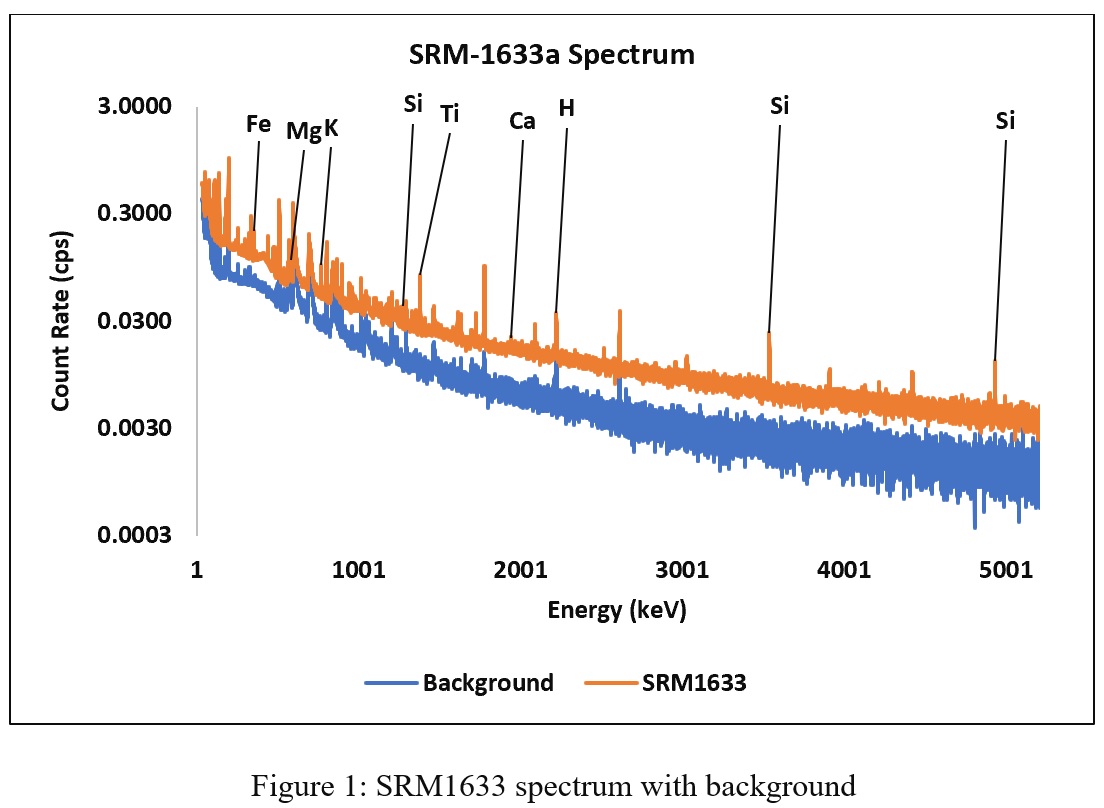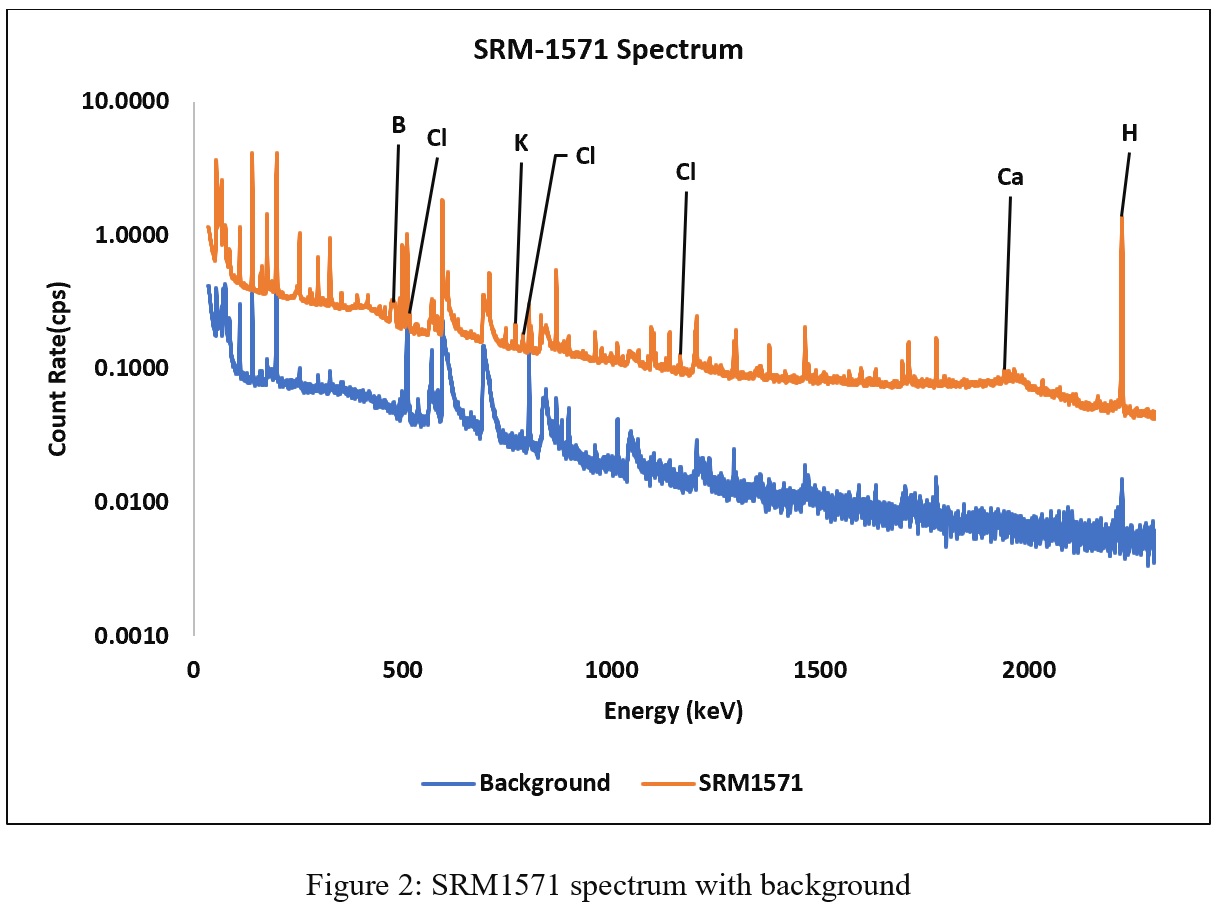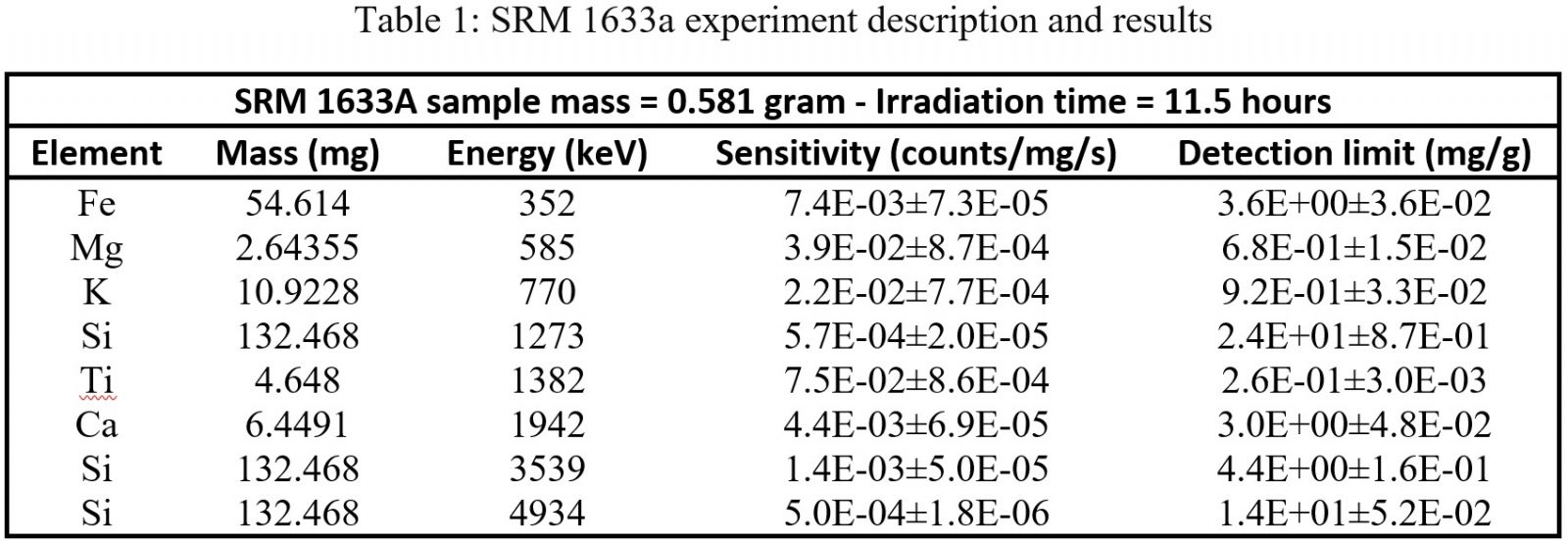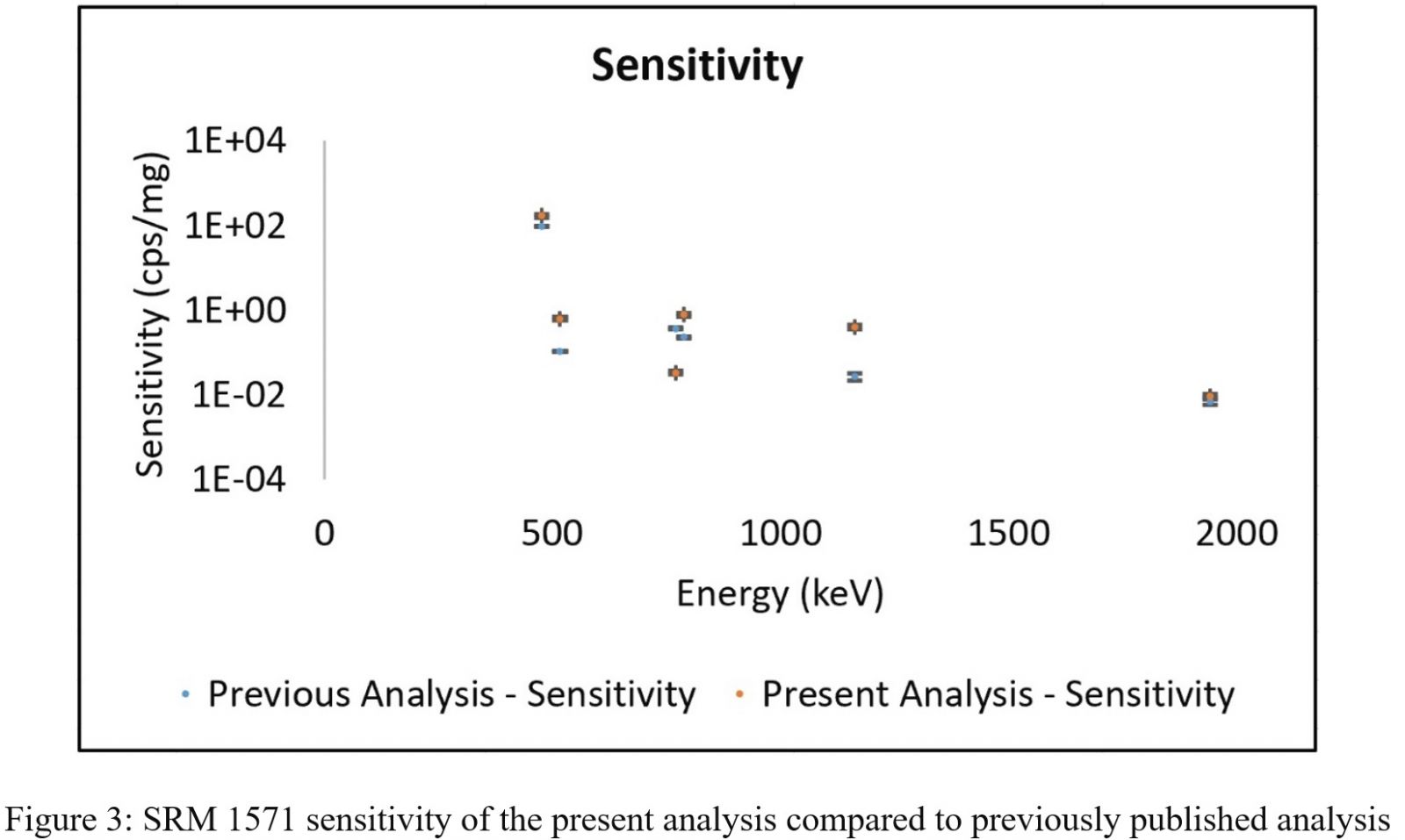


Theme
Medical Physics
INSTITUTION
King Abdulaziz University

This study aims at introducing the use of Neutron Activation Analysis (NAA) technique in Saudi Arabia to analyze the elemental composition of samples prepared at a local hospital for quality control purposes. Prompt Gamma Neutron Activation Analysis (PGNAA) and delayed gamma activation analysis plays an essential role in analyzing low and high concentrations of irradiated samples in many fields covering both short- and long-lived radioisotopes [1]-[3]. Also, after the technique proved its reliability, it has been recently introduced in the medical field [4]-[5]. Neutron activation analysis is a non-invasive technique that determines elements quantity without damaging the sample, allowing for repetitive measurements of the same sample.
To analyze a sample, the detection system must be properly calibrated and characterized. Various check sources (Cs-137, Ba-133, Co-60) were measured by a semi-conductor High Purity Germanium (HPGe) detector to perform both energy and efficiency calibration. In order to identify the quantity of each element, two homogeneous National Institution of Standards and Technology (NIST) Standard Reference Materials (SRM 1633a, SRM 1571), with known masses, were irradiated for 11.5 hours and 17 hours and measured respectively as shown in Figure 1, and Figure 2. Each peak in the two SRM samples was analyzed and the net area obtained using the least-squared method. Every SRM has a certificate that shows element weight fraction or mass (mg/g) for each element, which is used in sensitivity and minimum detectable limits (MDL) calculation.


Table 1 shows the mass, sensitivity and minimum detectable limits for each element in SRM 1633a.

Table 2 shows the mass, sensitivity and minimum detectable limits for each element in SRM 1571.

The present findings confirm that the elements provided by NIST certificates in the two SRMs samples were identified. The current results were compared to a previously published analysis by Robinson et al. for the same samples and both results demonstrate good agreement as shown in Figure 3 [6]. Moreover, the finding of this study, with respect to sensitivity and detection limit, validates that a detection system is more sensitive when a low detection limit values are achieved.

[1] P. Bode, Metadata of the book that will be visualized in SpringerLink Book Title Neutron Methods for Archaeology and Cultural Heritage, no. December 2017. 2018.
[2] C. Stieghorst et al., “Determination of boron and hydrogen in materials for multicrystalline solar cell production with prompt gamma activation analysis,” J. Radioanal. Nucl. Chem., vol. 317, no. 1, pp. 307–313, 2018.
[3] K. V. Tian et al., “Compositional studies of functional orthodontic archwires using prompt-gamma activation analysis at a pulsed neutron source,” J. Anal. At. Spectrom., vol. 32, no. 7, pp. 1420–1427, 2017.
[4] F. S. Romolo et al., “Instrumental neutron activation analysis (INAA) and liquid chromatography (LC) coupled to high resolution mass spectrometry (HRMS) characterisation of sildenafil based products seized on the Italian illegal market,” Forensic Sci. Int. Synerg., vol. 1, pp. 126–136, 2019.
[5] P. Bode, S. Romanò, and F. S. Romolo, “Large sample neutron activation analysis avoids representative sub-sampling and sample preparation difficulties: An added value for forensic analysis,” Forensic Chem., vol. 7, pp. 81–87, 2018.
[6] J. A. Robinson, M. R. Hartman, and S. R. Reese, “Design, construction and characterization of a prompt gamma activation analysis facility at the Oregon State University TRIGA® reactor,” J. Radioanal. Nucl. Chem., vol. 283, no. 2, pp. 359–369, Feb. 2010.
 Send Email
Send Email